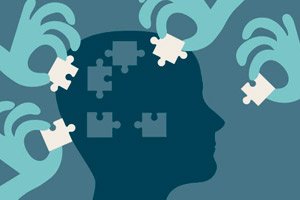
All iLive content is medically reviewed or fact checked to ensure as much factual accuracy as possible.
We have strict sourcing guidelines and only link to reputable media sites, academic research institutions and, whenever possible, medically peer reviewed studies. Note that the numbers in parentheses ([1], [2], etc.) are clickable links to these studies.
If you feel that any of our content is inaccurate, out-of-date, or otherwise questionable, please select it and press Ctrl + Enter.
Mathematical model explains how people remember stories using 'random tree' structure
Last reviewed: 15.07.2025

People are capable of remembering many different types of information, including facts, dates, events, and even complex narratives. Understanding how meaningful stories are stored in human memory is a key focus of much research in cognitive psychology.
Scientists at the Institute for Advanced Study, Emory University, and the Weizmann Institute of Science recently attempted to model how people represent meaningful narratives and store them in memory using mathematical objects known as “random trees.” Their paper, published in Physical Review Letters, presents a new conceptual framework for studying human memory processes that draws on mathematics, computer science, and physics.
“Our study aimed to address an important need: creating a mathematical theory of human memory for meaningful material like narratives,” said Misha Tsodyks, senior author of the paper. “There’s a consensus in the field that narratives are too complex to build such a theory, but I believe we’ve shown otherwise: Despite the complexity, there are statistical regularities in how people recall stories that can be predicted by a few simple basic principles.”
To effectively model the representation of meaningful memories using random trees, Tsodyks and colleagues conducted story-recall experiments with a large number of participants using the online platforms Amazon and Prolific. The study used narratives from Labov’s work. In total, 100 people were asked to recall 11 stories of varying lengths (ranging from 20 to 200 sentences), after which the scientists analyzed the memory transcripts to test their theory.
“We chose a collection of oral histories recorded by the renowned linguist W. Labov in the 1960s,” Tsodyks explained. “We quickly realized that analyzing such a volume of data required the use of modern artificial intelligence tools in the form of recently developed large language models (LLMs).
We found that people don't just recall individual events from stories, but often summarize fairly large parts of the narrative (e.g., episodes) in a single sentence. This led us to believe that narrative is stored in memory as a tree, with nodes closer to the root representing abstract summaries of larger episodes."
Tsodyks and his colleagues hypothesized that a tree representing a narrative is formed the moment a person first hears or reads a story and understands it. Since previous research shows that different people perceive the same stories differently, the trees that are formed will have unique structures.
"We formulated the model as an ensemble of random trees of a certain structure," Tsodyks said. "The beauty of this model is that it can be described mathematically, and its predictions can be tested directly against data, which is what we did. The main innovation of our random tree model of memory and retrieval is the assumption that all meaningful material is generally represented in memory in the same way.
Our research may have broader implications for understanding human cognitive processes, since narratives appear to be a universal way in which we reason about a wide variety of phenomena in our individual lives, as well as in social and historical processes."
The team’s recent work highlights the potential of mathematical and AI-based approaches to study how people store and represent meaningful information in their memories. In future studies, Tsodyks and his colleagues plan to assess the extent to which their theory and random tree modeling approach can be applied to other types of narratives, such as fiction.
“A more ambitious direction for future research would be to look for more direct evidence for the tree model,” Tsodyks added. “This would require developing experimental protocols other than simple playback. Another interesting direction would be to use brain imaging techniques in people engaged in narrative comprehension and playback.”
